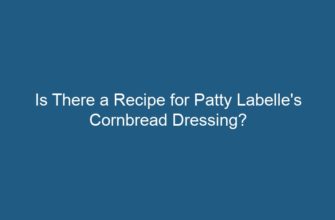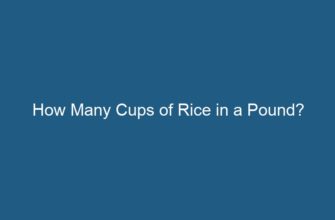Following a gluten-free diet has become increasingly popular in recent years, whether due to medical reasons such as celiac disease or gluten sensitivity, or as a personal choice for improved health and well-being. Gluten is a protein found in wheat, barley, and rye, and can cause adverse reactions in individuals with certain conditions.
- Understanding Gluten and Its Effects on the Body
- Celiac Disease and Gluten Sensitivity
- What Foods Contain Gluten?
- 1. Wheat-Based Products
- 2. Barley-Based Products
- 3. Rye-Based Products
- 4. Processed and Packaged Foods
- What Foods Are Gluten-Free?
- 1. Fruits and Vegetables
- 2. Meat, Poultry, and Fish
- 3. Dairy Products
- 4. Legumes and Nuts
- 5. Gluten-Free Grains and Flours
- Gluten-Free Food Preparation and Cross-Contamination
- 1. Dedicated Gluten-Free Kitchen
- 2. Separate Preparation Areas
- 3. Gluten-Free Cooking Utensils
- 4. Labeling and Storage
- Frequently Asked Questions (FAQs)
- 1. Are oats gluten-free?
- 2. Can I consume gluten-free grains if I have celiac disease?
- 3. Can I eat gluten-free bread and pasta?
- 4. Are all condiments gluten-free?
- 5. Can I dine out while following a gluten-free diet?
- 6. Is a gluten-free diet healthier for everyone?
- Conclusion
Understanding Gluten and Its Effects on the Body
Gluten is a composite protein made up of gliadin and glutenin, and it provides elasticity to dough, helping it rise and maintain its shape. However, for individuals who are gluten intolerant, consuming foods containing gluten can lead to a range of symptoms such as bloating, diarrhea, abdominal pain, and even damage to the small intestine.
Celiac Disease and Gluten Sensitivity
Celiac disease is an autoimmune condition where the ingestion of gluten triggers an immune response, causing damage to the villi in the small intestine. This can result in malabsorption of nutrients and various complications if left untreated. On the other hand, gluten sensitivity, also known as non-celiac gluten sensitivity, refers to individuals who experience symptoms similar to celiac disease but do not have the same autoimmune response or intestinal damage.
What Foods Contain Gluten?
Gluten is found in a variety of common foods, making it crucial for individuals on a gluten-free diet to be aware of potential sources. Here are some key categories of foods that typically contain gluten:
1. Wheat-Based Products
Wheat is one of the primary sources of gluten. It is essential to avoid foods that contain wheat or its derivatives, such as:
- Bread
- Pasta
- Cereals
- Crackers
- Flour tortillas
2. Barley-Based Products
Barley is another grain that contains gluten. It is commonly found in:
- Beer
- Malt
- Barley-based soups
- Barley malt vinegar
3. Rye-Based Products
Rye is yet another grain that contains gluten. Foods that may contain rye include:
- Rye bread
- Rye beer
- Rye-based cereals
- Rye flour
4. Processed and Packaged Foods
Gluten can also be found in processed and packaged foods, often as an additive or filler. It is essential to carefully read labels and look for hidden sources of gluten, including:
- Sauces and gravies
- Processed meats
- Certain condiments
- Snack foods
- Prepared meals
What Foods Are Gluten-Free?
Fortunately, there is a wide variety of naturally gluten-free foods that individuals on a gluten-free diet can enjoy. These include:
1. Fruits and Vegetables
Fresh fruits and vegetables are naturally gluten-free and provide essential nutrients. Incorporating a range of colorful fruits and vegetables into one’s diet is highly recommended.
2. Meat, Poultry, and Fish
Unprocessed meat, poultry, and fish are all gluten-free. However, it is crucial to avoid breaded or marinated meats, as they may contain gluten. Opting for lean cuts and preparing them using gluten-free ingredients is the safest choice.
3. Dairy Products
Most dairy products, such as milk, cheese, and yogurt, are naturally gluten-free. However, flavored or processed dairy products may contain gluten additives, so it’s essential to check the labels.
4. Legumes and Nuts
Legumes and nuts are excellent sources of protein and are naturally gluten-free. These include lentils, chickpeas, almonds, and cashews.
5. Gluten-Free Grains and Flours
There are several gluten-free grains and flours available as alternatives to wheat, barley, and rye. These include:
- Rice
- Corn
- Quinoa
- Buckwheat
- Amaranth
- Millet
- Coconut flour
- Almond flour
Gluten-Free Food Preparation and Cross-Contamination
While it may seem straightforward to identify gluten-free foods, it is essential to consider cross-contamination during food preparation. Cross-contamination occurs when gluten-containing products come into contact with gluten-free foods, potentially rendering them unsafe for individuals with gluten intolerance.
1. Dedicated Gluten-Free Kitchen
The best way to avoid cross-contamination is to have a dedicated gluten-free kitchen. This means separate utensils, cooking equipment, and storage areas for gluten-free foods.
2. Separate Preparation Areas
If a dedicated gluten-free kitchen is not possible, it is crucial to have separate preparation areas for gluten-free foods. This prevents the risk of gluten particles transferring between different foods.
3. Gluten-Free Cooking Utensils
Using separate cooking utensils, cutting boards, and toasters for gluten-free foods can significantly reduce the risk of cross-contamination.
4. Labeling and Storage
Properly labeling gluten-free products and storing them separately from gluten-containing foods can help prevent accidental consumption of gluten.
Frequently Asked Questions (FAQs)
1. Are oats gluten-free?
Oats themselves are gluten-free, but they are often cross-contaminated during processing. To ensure gluten-free oats, look for products labeled as “certified gluten-free.”
2. Can I consume gluten-free grains if I have celiac disease?
Yes, individuals with celiac disease can safely consume gluten-free grains. However, it is essential to ensure that the grains are not contaminated with gluten during processing.
3. Can I eat gluten-free bread and pasta?
Yes, there are numerous gluten-free bread and pasta options available. Look for products made from gluten-free grains, such as rice or corn.
4. Are all condiments gluten-free?
No, not all condiments are gluten-free. Some may contain gluten as a thickening agent or flavor enhancer. Always read the labels carefully or choose condiments specifically labeled as gluten-free.
5. Can I dine out while following a gluten-free diet?
Yes, many restaurants now offer gluten-free options. However, it is crucial to communicate your dietary needs to the staff and ensure proper precautions are taken to avoid cross-contamination.
6. Is a gluten-free diet healthier for everyone?
A gluten-free diet is necessary for individuals with celiac disease or gluten sensitivity. However, for individuals without these conditions, there is no evidence to suggest that a gluten-free diet is inherently healthier.
Conclusion
In conclusion, a complete list of gluten-free foods includes a wide range of fruits, vegetables, meats, dairy products, legumes, and gluten-free grains and flours. It is essential for individuals on a gluten-free diet to be aware of potential sources of gluten and take necessary precautions to avoid cross-contamination during food preparation. By following a gluten-free diet, individuals with celiac disease or gluten sensitivity can manage their condition and improve their overall health and well-being.










